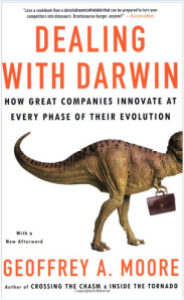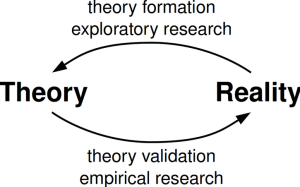
We all are caught up in handling and understanding different management tools.
Building Your Innovation Intelligence
Bringing my thinking and solutions to your problems

 I recently wrote a post “Finding knowledge and research to help you learn and adapt”.
I recently wrote a post “Finding knowledge and research to help you learn and adapt”. “The world has never been as complex, dynamic and uncertain as it is today and the pace of change will only increase.”
“The world has never been as complex, dynamic and uncertain as it is today and the pace of change will only increase.” The future within our engagements will determine diffusion and adoption- part three
The future within our engagements will determine diffusion and adoption- part three
One of my favorite books is “Dealing with Darwin– how great companies innovate at every phase of their evolution” written by Geoffrey Moore. It is well worth a read.
When you work through his other books and connect thinking of “Crossing the Chasm” and “Inside the Tornado” you really appreciate the learning stories coming out of Roger Moore’s studies of the Technology Adoption Life-Cycle.
We all need to rethink a lot as the new challenges come rushing towards us.
In his work, Geoffrey Moore talks about ‘traction’ and I think this is a great word for thinking about how to gain diffusion and adoption in product, service or business models, to gain market and customer acceptance.
Continue reading “Exploring Diffusion and Adoption for Innovation – Part 3”
 The future within our engagements will determine diffusion and adoption
The future within our engagements will determine diffusion and adoption
It is all about letting go but also grabbing more at the same time, and then finding ‘it’.
Technology has opened up the door to both scale and fragmentation and social business is the one pushing through this open door.
We are increasingly facing the Collaborative Economy everywhere we turn. Social business is becoming the denominator of success or failure.
We are needing to confront the new questions that are emerging
New rules are emerging – you could say new theories – and where are these fitting within the corporate mindset?
Continue reading “Exploring Diffusion and Adoption of Innovation – Part 2”
 The future within our engagements will determine diffusion and adoption- part one.
The future within our engagements will determine diffusion and adoption- part one.
According to Professor Clayton Christensen and drawn from his book “Seeing What’s Next: Using the Theories of Innovation to Predict Industry Change”, by Clayton M. Christensen, Scott D. Anthony, and Erik A. Roth published by Harvard Business School Press, the only way to look into the future is to use theories.
“The best way to make accurate sense of the present, and the best way to look into the future, is through the lens of theory.” The theory of innovation helps to understand the forces that shape the context and influence natural decisions.
This might not be fashionable for many because as soon as you introduce “theory” into the discussion for many of my practical colleagues they want to dismiss it.
Going back to Christensen “good theory provides a robust way to understand important developments, even when the data is limited. “Theory helps to block out the noise and to amplify the signal”.
Diffusion of Innovation Theory is important for our innovation understanding
Continue reading “Exploring Diffusion and Adoption for Innovation – Part 1”
In the last week or so I took a step back to look at the emerging trends around innovation. It certainly seems to have a bright future but its management is growing in complexity.
It now needs a deeper understanding than ever. Are we achieving that?
My viewpoint on observing different innovation dilemmas:
Continue reading “Clear trends are shaping the future of innovation”